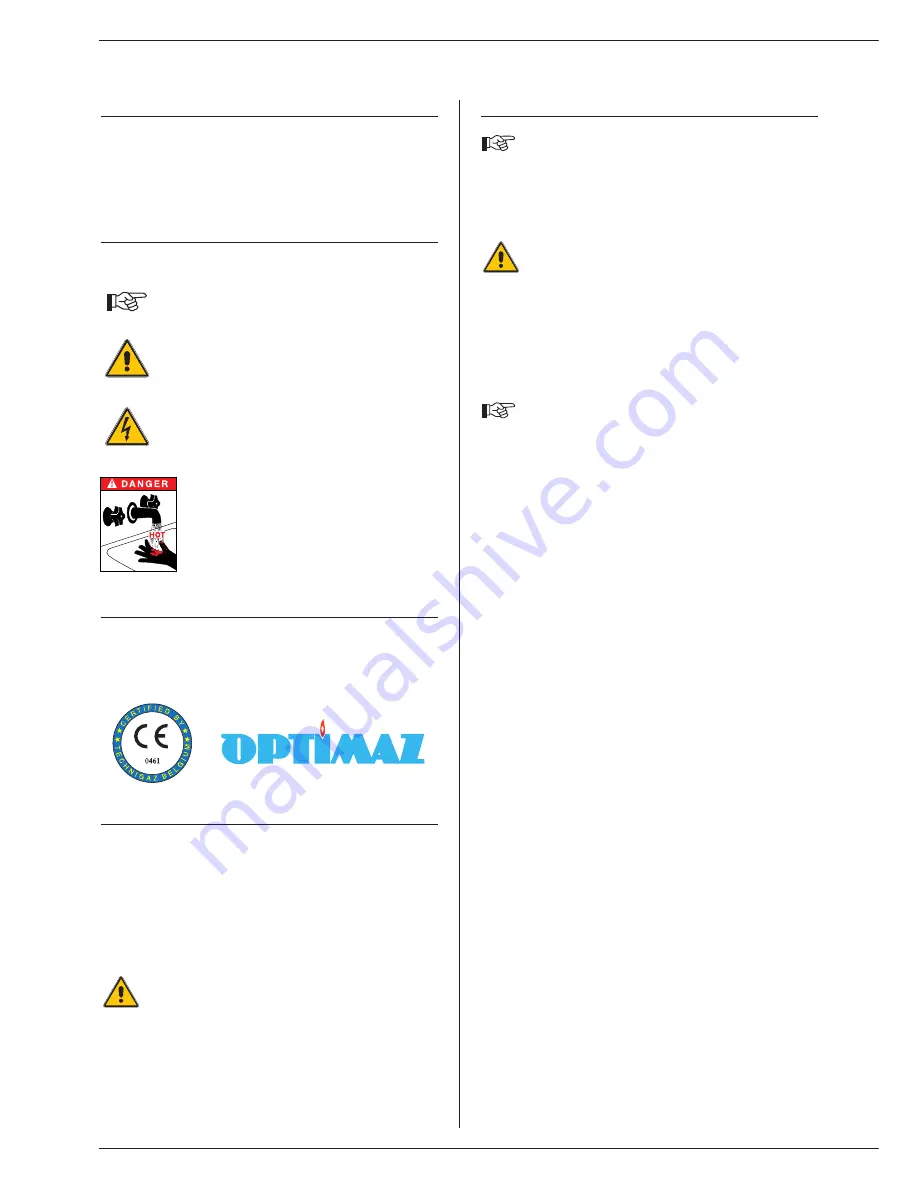
2
WHO SHOULD READ THESE INSTRUCTIONS
These instructions should be read by:
- the specifying engineer
- the installer
- the user
- the service engineer
SYMBOLS
The following symbols are used in these instructions:
APPLICABLE STANDARDS
The products described in this document have been certified at
European level (European Directive 92/42/EEC “Efficiency”). They
have also been awarded the Belgian “OPTIMAZ” label (for oil-fired
boilers).
IMPORTANT NOTES
These instructions are an integral part of the equipment to which
they relate and must be handed to the user.
The product must be installed and serviced by qualified engineers in
accordance with the regulations in force.
ACV declines all liability for any damage caused as a result of
installation or in the event of the use of appliances or accessories
that are not specified by ACV.
Failure to follow the instructions describing test oper-
ations and procedures may cause injury to persons or
a risk of environmental pollution.
N.B.:
ACV reserves the right to change the technical characteristics and
specification of its products without notice.
INTRODUCTION
USER GUIDE
Essential instruction for correct operation of the
installation.
Burning hazard.
Electric shock hazard.
Essential instruction for the safety of persons and
the environment.
USE OF THE BOILER
To ensure that your system operates correctly, please
have it serviced annually, before the start of the
heating season, by a qualified engineer.
In normal operation the burner starts automatically if
the temperature of the boiler is below setpoint.
Before carrying out any work on the boiler, isolate it
from the electrical supply at the switch on the external
control box.
Also move the main switch on the control panel to
“OFF”.
• You should familiarise yourself with the control panel
(Fig. 1)
The user must not attempt to gain access to the
components inside the control panel.
1.
Main switch
This switch is used to start or stop the boiler.
2.
Summer/Winter switch
This is used to switch the heating pump on or off.
3.
Energy selection switch
This is used to switch the heating pump and the burner off (or on).
It is used to switch a 2.4 kW resistor on (or off) for the provision of
hot water.
4.
Resistor indicator lamp
This lamp indicates that the electrical resistor is energised.
5.
Optimiser
This device switches the boiler on and off according to the time,
operating on a 24-hour cycle. There are small white lugs around the
circumference of the programmer. Each lug represents a 15 minute
switching period. To set the 24-hour programmer, simply push
outwards the lugs that correspond to the boiler operating period.
Reminder: Lug in inner position = BNE off
Lug in outer position = BNE on
6.
Hot water temperature control thermostat
In hot water mode, the temperature of the hot water can be adjust-
ed from 60 to 80°C.
7.
Thermostat-pressure gauge
This dial shows the boiler temperature and the pressure in the
primary circuit. The temperature should not exceed 90°C. If it is
higher than this, stop the boiler and check that the thermostat is
operating correctly. If the problem persists, call an engineer. The
pressure should not fall below 1 bar. If it does, refer to the paragraph
entitled “Gauge pressure in the heating system”, later in this section.
8.
Heating temperature control thermostat
In “Winter” position the boiler temperature can be set to between 60
and 90°C.
It is advisable to set this thermostat 10°C above the hot water
thermostat setting.





































